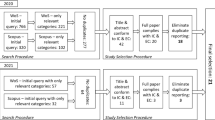Abstract
Enterprise information systems can be developed following a model-driven paradigm. This way, models that represent the organisational work practice are used to produce models that represent the information system. Current software development methods are starting to provide guidelines for the construction of conceptual models, taking as input requirements models. This paper proposes the integration of two methods: Communication Analysis (a communication-oriented requirements engineering method [1]) and the OO Method (a model-driven object-oriented software development method [2]). For this purpose, a systematic technique for deriving class diagrams from business process models is proposed. The business process specifications (which include message structures) are processed in order to obtain class diagram views, which are integrated to create the class diagram incrementally. Then, using the olivanova framework, software source code can be generated automatically. The paper also discusses the advantages and current limitations of the technique. Results show that, although there is room for improvement, the technique is feasible and it does facilitate the creation of the class diagram.
Research supported by projects gva orca (prometeo/2009/015), micinn pros Req (TIN2010-19130-C02-02), the mec fpu grant (AP2006-02323), and co-financed with erdf.
Access this chapter
Tax calculation will be finalised at checkout
Purchases are for personal use only
Preview
Unable to display preview. Download preview PDF.
Similar content being viewed by others
References
España, S., González, A., Pastor, Ó.: Communication Analysis: a requirements engineering method for information systems. In: van Eck, P., Gordijn, J., Wieringa, R. (eds.) CAiSE 2009. LNCS, vol. 5565, pp. 530–545. Springer, Heidelberg (2009)
Pastor, O., Molina, J.C.: Model-Driven Architecture in practice: a software production environment based on conceptual modeling. Springer, New York (2007)
Henderson, J.C., Venkatraman, N.: Strategic alignment: leveraging information technology for transforming organizations. IBM Syst. J. 38(2-3), 472–484 (1999)
España, S., Ruiz, M., Pastor, Ó., González, A.: Systematic derivation of state machines from communication-oriented business process models. In: RCIS 2011. IEEE, Los Alamitos (2011)
España, S., González, A., Pastor, Ó., Ruiz, M.: Integration of Communication Analysis and the OO-Method: Manual derivation of the conceptual model. The SuperStationery Co. lab demo. Technical report ProS-TR-2011-01 (2011), http://arxiv.org/pdf/1101.0105
CARE Technologies. OLIVA NOVA The Programming Machine, http://www.care-t.com
Weigand, H.: Two decades of the language-action perspective. Introduction. Commun. ACM 49(5), 44–46 (2006)
Díaz, I., Sánchez, J., Matteo, A.: Conceptual modeling based on transformation linguistic patterns. In: Delcambre, L.M.L., Kop, C., Mayr, H.C., Mylopoulos, J., Pastor, Ó. (eds.) ER 2005. LNCS, vol. 3716, pp. 192–208. Springer, Heidelberg (2005)
Insfrán, E., Pastor, Ó., Wieringa, R.: Requirements engineering-based conceptual modelling. Requir. Eng. 7(2), 61–72 (2002)
Kösters, G., Six, H.-W., Winter, M.: Coupling use cases and class models as a means for validation and verification of requirements specifications. Requir. Eng. 6(1), 3–17 (2001)
Fortuna, M., Werner, C., Borges, M.: Info Cases: integrating use cases and domain models. In: 16th International Requirements Engineering Conference, pp. 81–84. IEEE Press, Los Alamitos (2008)
de la Vara, J.L., Sánchez, J.: System modeling from extended task descriptions. In: 22nd Int. Conference on Software Engineering and Knowledge Engineering, pp. 425–429 (2010)
España, S., Condori-Fernandez, N., González, A., Pastor, Ó.: An empirical comparative evaluation of requirements engineering methods. J. Braz. Comp. Soc. 16(1), 3–19 (2010)
Nigam, A., Caswell, N.S.: Business artifacts: An approach to operational specification. IBM Syst. J. 42(3), 428–445 (2003)
Reijers, H.A., Limam, S., Van Der Aalst, W.M.P.: Product-based workflow design. J. Manage. Inform. Syst. 20(1), 229–262 (2003)
Sun, S.X., Zhao, J.L., Nunamaker, J.F., Liu Sheng, O.R.: Formulating the data-flow perspective for business process management. Inform. Syst. Res. 17(4), 374–391 (2006)
Batini, C., Lenzerini, M., Navathe, S.B.: A comparative analysis of methodologies for database schema integration. ACM Comput. Surv. 18(4), 323–364 (1986)
González, A., España, S., Pastor, Ó.: Unity criteria for business process modelling: A theoretical argumentation for a Software Engineering recurrent problem. In: RCIS 2009, pp. 173–182. IEEE, Los Alamitos (2009)
González, A., Ruiz, M., España, S., Pastor, Ó.: Message Structures: a modelling technique for information systems analysis and design. In: WER 2011 (2011), Extended version available http://arxiv.org/abs/1101.5341
Lindland, O.I., Sindre, G., Sølvberg, A.: Understanding quality in conceptual modeling. IEEE Softw. 11(2), 42–49 (1994)
Moody, D.L.: The Method Evaluation Model: A theoretical model for validating information systems design methods. In: ECIS 2003 (2003)
Ruiz, M., S. España, A. Gonzalez, and O. Pastor, Análisis de Comunicaciones como un enfoque de requisitos para el desarrollo dirigido por modelos. In: Avila-García, O., Cabot, J., Muñoz, J., Romero, J.R., Vallecillo, A. (eds.) DSDM 2010, JISBD, pp. 70-77 (2010)
OMG: Business Process Modeling Notation (BPMN) version 2.0 (2011), http://www.omg.org/spec/BPMN/2.0/
Author information
Authors and Affiliations
Editor information
Editors and Affiliations
Rights and permissions
Copyright information
© 2011 Springer-Verlag Berlin Heidelberg
About this paper
Cite this paper
González, A., España, S., Ruiz, M., Pastor, Ó. (2011). Systematic Derivation of Class Diagrams from Communication-Oriented Business Process Models. In: Halpin, T., et al. Enterprise, Business-Process and Information Systems Modeling. BPMDS EMMSAD 2011 2011. Lecture Notes in Business Information Processing, vol 81. Springer, Berlin, Heidelberg. https://doi.org/10.1007/978-3-642-21759-3_18
Download citation
DOI: https://doi.org/10.1007/978-3-642-21759-3_18
Publisher Name: Springer, Berlin, Heidelberg
Print ISBN: 978-3-642-21758-6
Online ISBN: 978-3-642-21759-3
eBook Packages: Computer ScienceComputer Science (R0)




